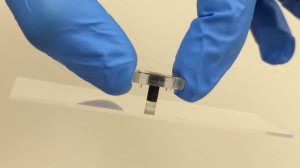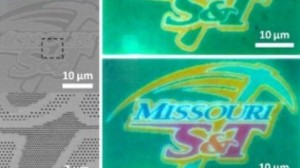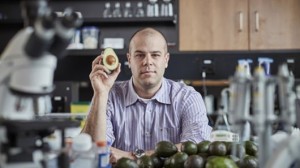Simple and cheap tunable gripper inspired by the gecko
A few months ago, we reported on the development of a material that uses the same technique employed by gecko feet to allow its adhesion to be turned on and off at will. This allows fragile components, like those used in the manufacture of semiconductors, to be carefully picked up and put down without suction or residue-leaving adhesives. Now researchers at the University of Pennsylvania (UPenn) have developed a gripper, also inspired by the gecko and also tunable, that they claim is much simpler, making it easy and cheap to mass produce.
The material developed by scientists at Germany’s Leibniz Institute for New Materials (INM) that we looked at in March mimics the microscopic mushroom-shaped, hair-like projections known as setae that are found on gecko feet. So, just like gecko feet, the manmade microscopic pillars created by the INM team temporarily bond to surfaces at the molecular level thanks to the van der Waals force. To switch the stickiness off, the structure of the pillars is altered electronically. The problem is that making these complicated structures is, well, complicated.
“Other researchers have mimicked [gecko setae] structures to achieve tunable adhesion, but they are tough to make,” says UPenn graduate student Helen Minsky. “You can make a few of these structures, but, if you want to make larger arrays of them, it becomes much tougher. The angles and the flared tip means you can’t just slip them out of a mold.”
So although they also took inspiration from the gecko, Minsky and Kevin Turner, the Gabel Family Term Associate Professor in the School of Engineering and Applied Science’s Department of Mechanical Engineering and Applied Mechanics, have taken a different approach.
They created a simple cylindrical post structure that consists of a hard plastic core surrounded by a softer silicone rubber shell. While the structure doesn’t mimic the mushroom shape of the gecko’s setae, it achieves the same result through the soft rubber conforming to the surface and the stress from lifting being concentrated on the stiff inner core. The adhesion is switched off through the application of lateral force, which shifts the stress to the edges and allows a crack to form and the bond to break.
“When it comes to tunable adhesion, everyone is familiar with the gecko, and everyone tries to copy it,” says Turner. “The problem is that it’s really hard to manufacture complex structures as well as nature. We’ve come up with a strategy that can achieve similar adhesion behavior but is much easier to make.”
The researchers have created prototype grippers that are a few millimetres in diameter and are designed to grip smooth surfaces, such as glass. However, they claim their experiments and simulations indicate that the composite structure will work in the same way when scaled down to microscopic sizes.
References:http://www.gizmag.com/




